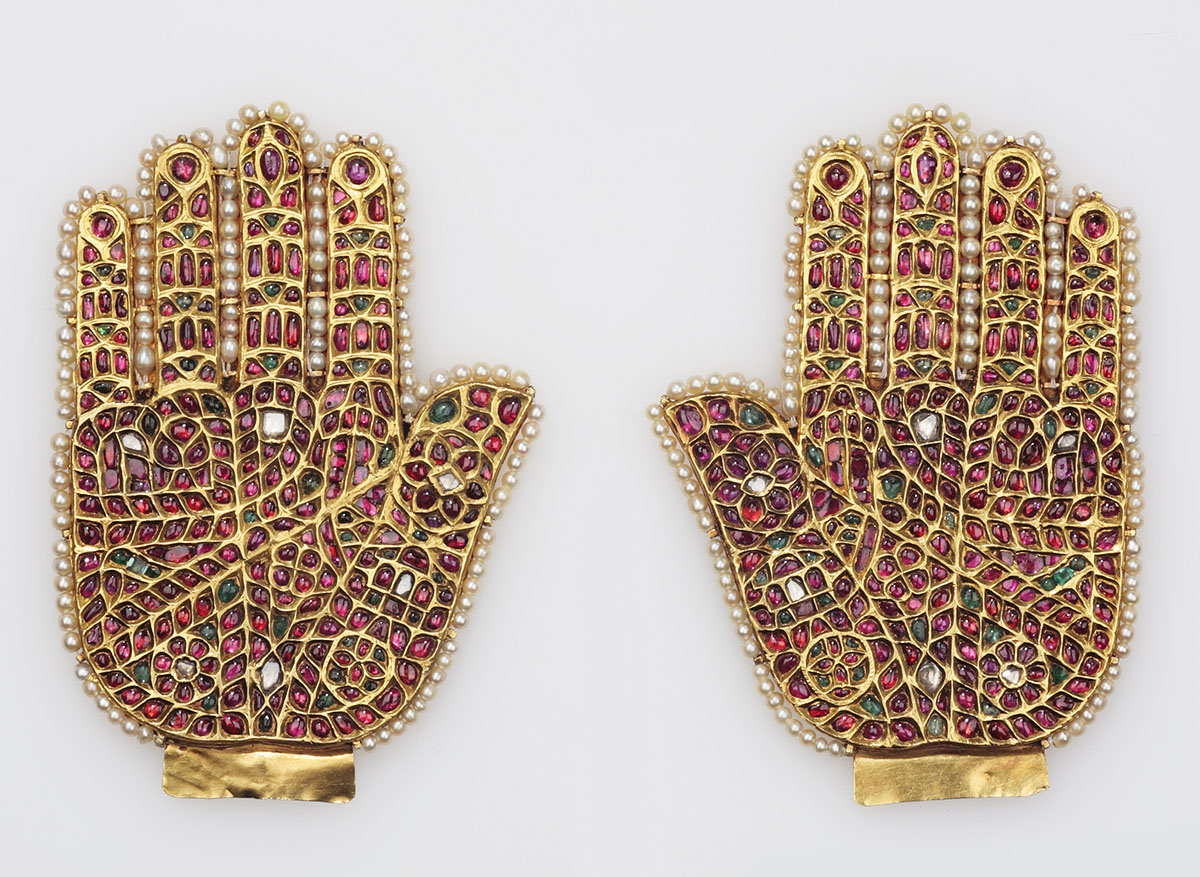ARTICLE
Hand of Fatima
A talismanic symbol traditionally found in Abrahamic religions, particularly Shia Islam, the Hand of Faitma is believed to ward off evil and bad luck. Also known as hamsa in Hebrew and khamsa in Arabic, it is depicted as a right palm with the fingers held together and pointed upwards. The tip of the thumb is curved away from the other fingers, as is the smallest finger, making the Hand visually symmetrical. The symbol of an evil eye is often added in the palm area as an additional layer of protection. A rarer version of the Hand, which is found in South Asia, does not have a curved small finger or an evil eye motif, making it more naturalistic.
The Hand of Fatima is believed to have originated in Carthage, an ancient city in present-day Tunisia, in the second millennium BCE. Initially a symbol for the Phoenecian goddess Tanit, the Hand was later absorbed into Jewish iconography as the Hand of Miriam. While its subsequent use in Christian imagery as the Hand of Mary was limited, it went on to become a widespread symbol among mediaeval Muslims. Following the now established tradition of naming the Hand after a protective female figure, it was called the Hand of Fatima after the daughter of the Prophet Mohammed. The five fingers of the Hand came to represent the five members of the Ahl al-Bayt, the Prophet’s family: Mohammed, Fatima, her husband Ali, and their sons Hussain and Hassan. As the Ahl al-Bayt is revered by Shia Muslims, the Hand is more popular with members of that sect.
The Hand of Fatima is often treated as an exception to the Quran’s condemnation of symbolism and superstitious practices, and is used to varying degrees across the Muslim world. It is typically made from metal sheets, which may be cut into arabesque patterns for elaborate pieces. It may also be drawn, rendered as an Arabic calligram, or printed. The Hand was used extensively in the uniforms and weapons of mediaeval Sunni armies, sometimes even being employed as an alam or processional standard, suggesting that the luck it supposedly brought was valued on the battlefield as well. The Hand is also commonplace in Sunni countries such as Algeria, whose national emblem features the Hand among other symbols.
Most notable Indian examples of the Hand of Fatima have been found in the Deccan region, which was ruled by Shia sultanates in the pre-colonial period. However, an intricately crafted gilt silver Hand, dated to the eighteenth century, was also found at Awadh. Among the Deccan examples is a heavily bejewelled set of two Hands found at the Badshahi Ashurkhana in Hyderabad, also from the eighteenth century. The Hands are made in the asymmetrical style, both left and right, and consist of a gold-plated lac foundation, studded with rubies, emeralds and diamonds, and outlined in pearls. The two Hands were possibly made to be joined together, allowing the jewelled side to be visible from the back and the front. Other larger but less decorated Hands were used as ceremonial alams in Hyderabad in the eighteenth and nineteenth centuries.
The Hand of Fatima continues to be used as a talisman across the Islamic world. In households, it primarily takes the form of printed calligrams, drawings or cut metal plates with simple designs. Quranic verses, especially the Ayat Al-kursi or Throne Verse, are a common scriptural accompaniment to the Hand.
Bibliography
Our website is currently undergoing maintenance and re-design, due to which we have had to take down some of our bibliographies. While these will be re-published shortly, you can request references for specific articles by writing to hellomapacademy@map-india.org.







